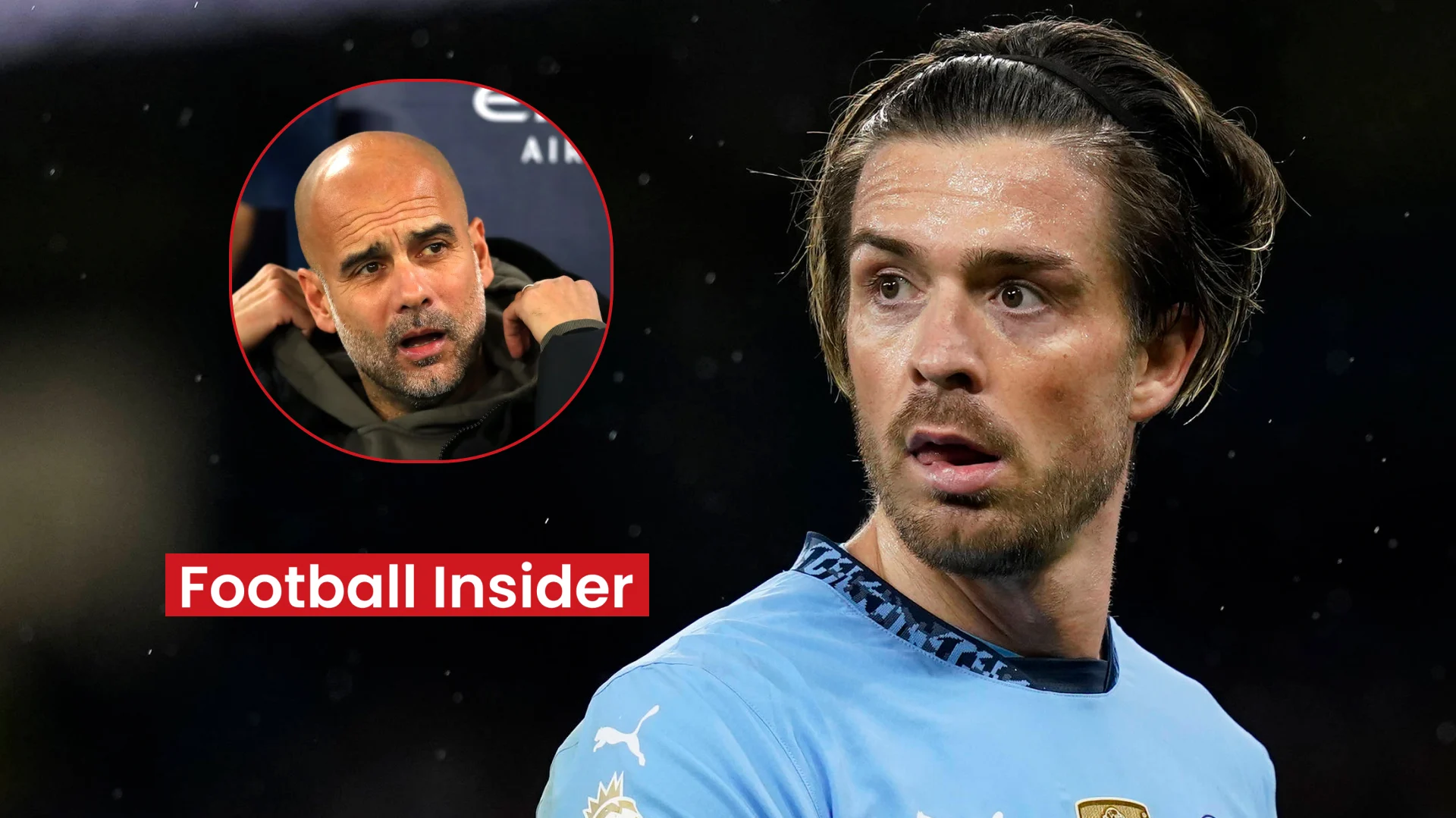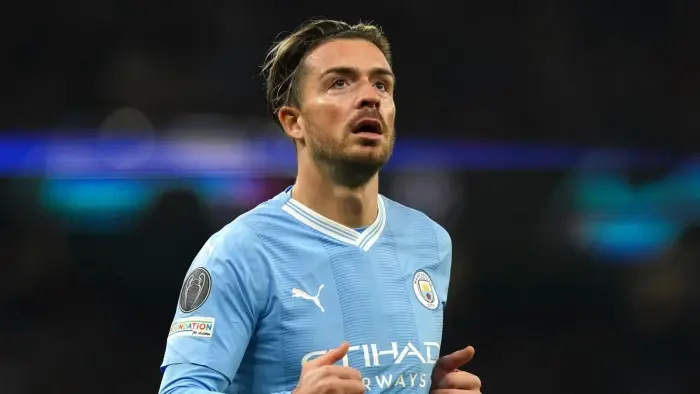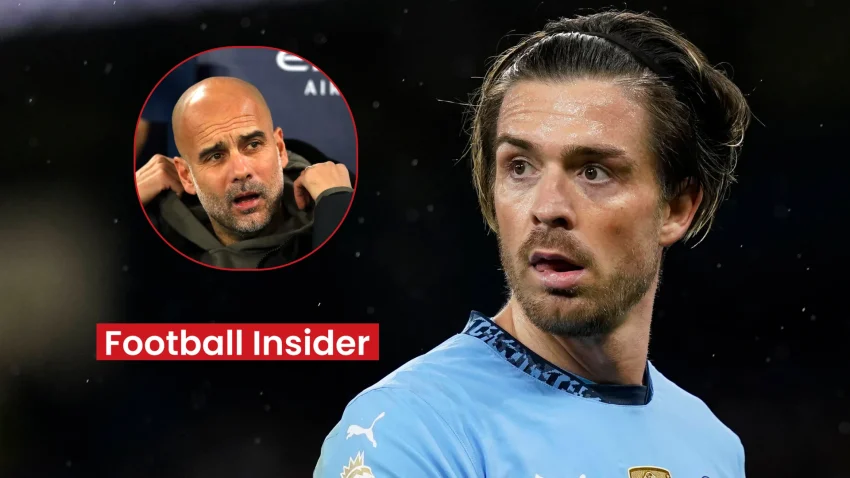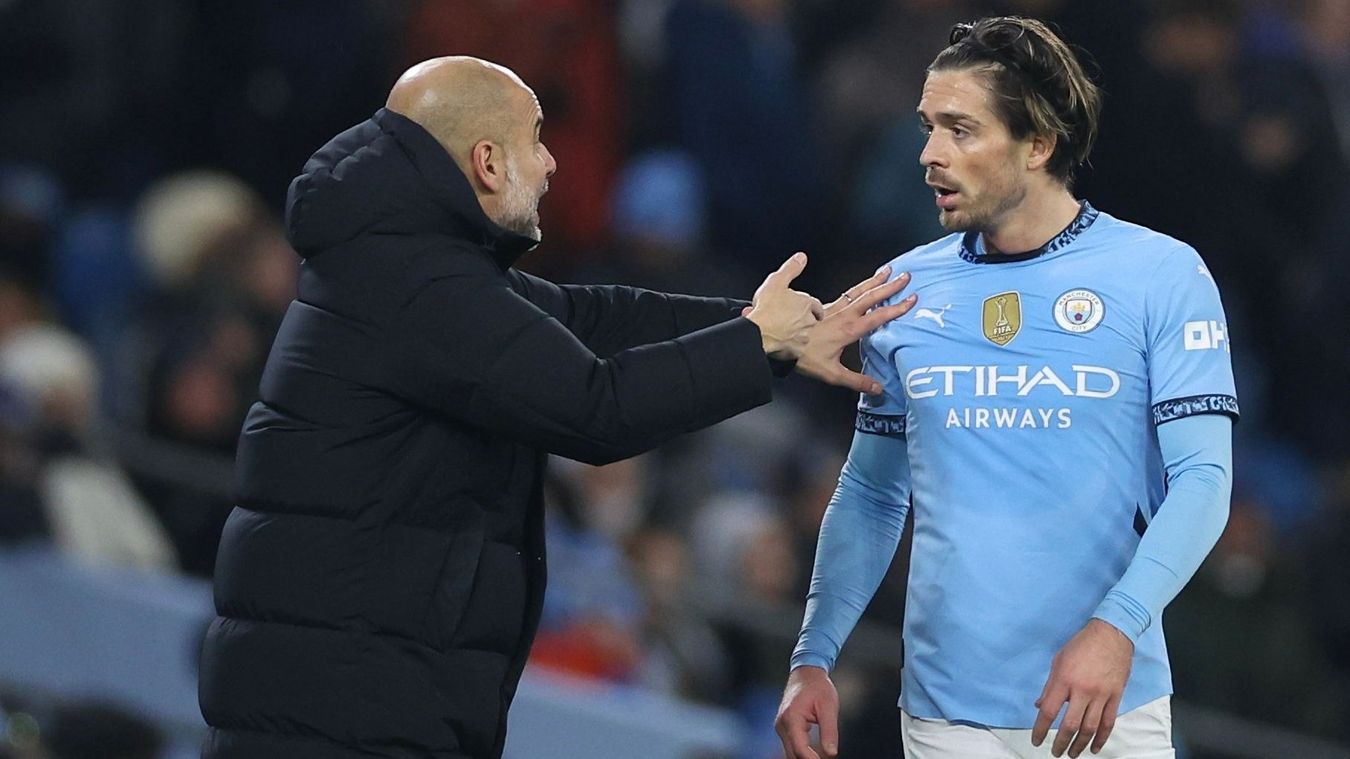Few managers in the football world command respect like Pep Guardiola. Known for his tactical brilliance and ability to transform players into world-class performers, the Manchester City boss has built a reputation for outthinking his opponents. But every now and then, even the brightest minds can leave fans scratching their heads—and Guardiola’s recent decision involving Jack Grealish has sparked a heated debate.
In what was expected to be a routine victory for Manchester City, Guardiola’s tactical tweak baffled fans and pundits alike, leaving two key City players exposed and raising questions about the Spaniard’s experimental approach. Let’s break down this contentious decision, the fallout for Grealish, and what it means for City’s campaign.

The Context: Man City’s Title Race
Manchester City’s relentless pursuit of silverware under Guardiola has been nothing short of spectacular. With a squad boasting world-class talent across every position, the club’s dominance in English football has been a masterclass in precision, discipline, and creativity.
However, the competition in the Premier League is fiercer than ever. Arsenal, Liverpool, and Tottenham are all breathing down City’s neck, ready to pounce on any misstep. With the league’s margins razor-thin, every game matters, and every decision Guardiola makes is scrutinized to the nth degree.
This brings us to the controversial moment in City’s recent match—a seemingly minor tweak that spiraled into a tactical mess.
The Decision: Guardiola’s Surprising Use of Jack Grealish
Guardiola’s lineup initially looked solid, with Grealish occupying his usual left-wing role. The £100 million man has gradually found his feet at City, showcasing his trademark dribbling, ball retention, and ability to draw defenders. However, Guardiola threw a curveball by instructing Grealish to drift into a more central, free-floating position, leaving the left flank largely unoccupied.
The idea, presumably, was to overload the midfield and disrupt the opposition’s defensive structure. Grealish’s movement was meant to act as a decoy, pulling defenders out of position and creating space for others to exploit. On paper, it sounded like a vintage Guardiola move—innovative and bold.
But in practice, it left City vulnerable, exposing the defensive frailties of two key players: left-back Sergio Gómez and midfielder Kalvin Phillips.
The Fallout: City Duo Struggles Under Pressure
By vacating the left flank, Grealish inadvertently left Sergio Gómez isolated. Gómez, a young and promising talent, found himself overwhelmed by the opposition’s counterattacks. Without Grealish to provide an outlet or cover during transitions, Gómez was frequently caught out of position, leaving City’s defense exposed.
The domino effect extended to Kalvin Phillips, who was tasked with covering the gaps left by Gómez. Phillips, still adapting to Guardiola’s demanding system, struggled to cope with the added responsibility. His lack of sharpness in tracking back and breaking up play became painfully evident as the opposition exploited City’s newfound weakness.
Pundits were quick to point out the flaws. Former City defender Micah Richards described the situation as “a tactical misfire,” while ex-Liverpool star Jamie Carragher went a step further, calling it “an unnecessary gamble in a crucial game.”
Why the Experiment Backfired
Guardiola is no stranger to tinkering with his tactics, often to devastating effect for his opponents. But in this instance, the experiment seemed unnecessary. City’s tried-and-tested system has been remarkably consistent, with Grealish excelling in his natural wide role.
So why fix something that wasn’t broken?
One theory is that Guardiola was attempting to address City’s recent struggles against low-block defenses. By pulling Grealish into the middle, he may have hoped to create more numerical superiority in central areas. However, this adjustment ignored the balance that has been key to City’s success.
Grealish’s ability to stretch defenses and provide width is crucial to City’s style of play. His absence on the wing not only disrupted the team’s attacking rhythm but also made life harder for Gómez and Phillips, who were left to plug the gaps.
The Criticism: Grealish Caught in the Crossfire
As the focal point of Guardiola’s tactical adjustment, Grealish has found himself at the center of the criticism. Fans questioned his effectiveness in the central role, arguing that his strengths—ball retention, drawing fouls, and delivering pinpoint crosses—are best utilized on the flank.
Pundits, too, have been vocal about the experiment. Roy Keane, never one to mince words, remarked:
“Jack Grealish is a top player, but this isn’t the way to use him. You’re taking away what makes him special and asking him to do a job that doesn’t suit him.”
Grealish, for his part, appeared visibly frustrated during the game. While he tried to adapt to his new role, it was clear that he was out of his comfort zone. His influence waned as the match progressed, and City’s attack lacked its usual fluidity.
Guardiola’s Justification: A Calculated Risk?
After the game, Guardiola defended his decision, emphasizing the need to experiment and adapt. Speaking to reporters, he said:
“Football is about trying new things. Sometimes it works, sometimes it doesn’t. Jack is a versatile player, and I wanted to see how he could influence the game from a different position.”
Guardiola’s willingness to innovate is part of what makes him a great manager. But in a season where every point counts, was this the right time to experiment?
What’s Next for Man City and Grealish?
The fallout from this tactical gamble has raised several questions for Guardiola and his squad:
- Will Grealish return to his natural role?
Fans will undoubtedly hope to see Grealish reinstated on the left wing, where he has consistently performed at a high level. - Can Sergio Gómez and Kalvin Phillips recover their confidence?
Both players will need to bounce back quickly, as City’s schedule offers little respite. - Will Guardiola curb his experimental streak?
While innovation has been Guardiola’s hallmark, this episode may prompt him to reconsider such bold tweaks in high-stakes games.
The Bigger Picture: Is Guardiola Overthinking It?
This isn’t the first time Guardiola has been accused of overthinking his tactics. From his infamous Champions League final lineup against Chelsea to various other high-profile games, the Spaniard’s tendency to tinker has sometimes backfired.
However, it’s also important to remember that Guardiola’s experiments have often paid off spectacularly. His ability to adapt and innovate has been a cornerstone of City’s dominance, and one misstep shouldn’t overshadow his achievements.
That said, Guardiola must strike a balance between creativity and pragmatism. As the title race heats up, City can ill afford to drop points due to unnecessary risks.
Conclusion: A Lesson Learned?
Pep Guardiola’s decision to redeploy Jack Grealish in a central role will likely go down as one of the more puzzling moments of the season. While his intentions may have been noble, the execution left much to be desired, exposing City’s vulnerabilities and sparking widespread criticism.
For Grealish, Gómez, and Phillips, this game will serve as a reminder of the fine margins in top-level football. For Guardiola, it’s an opportunity to reflect on his approach and ensure that his innovations don’t come at the expense of results.
As City continues its pursuit of glory, one thing is certain: all eyes will be on Guardiola’s next move. Whether he doubles down on his experiments or reverts to his tried-and-true methods, the football world will be watching. And for better or worse, Pep Guardiola will always keep us guessing.


